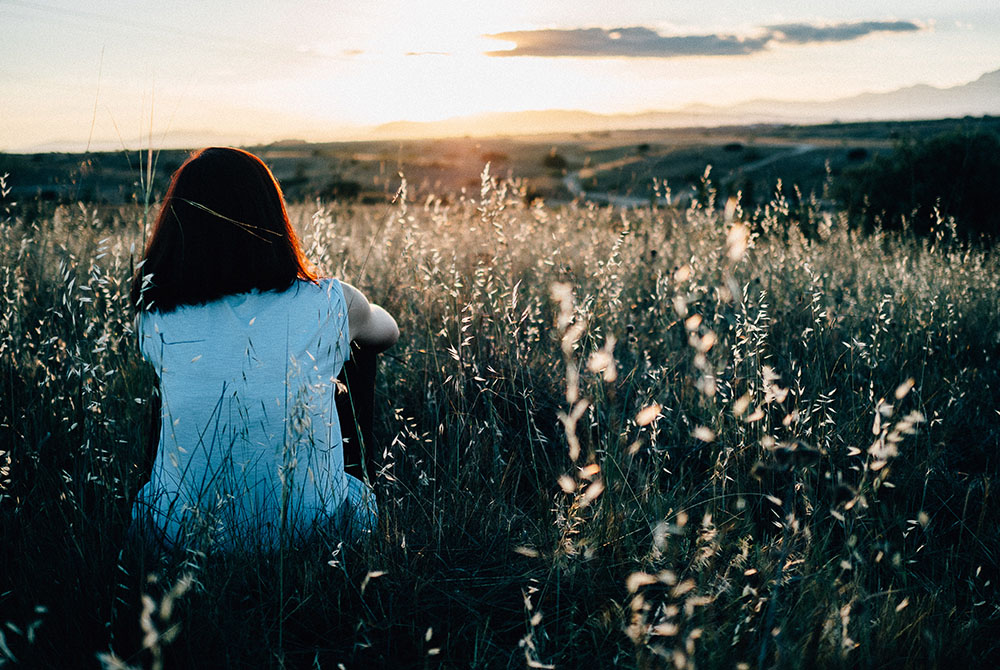
(Unsplash/Edu Grande)
At the beginning of the pandemic, I, like so many, made a list of things I wanted to do and books I needed to read before the initial shutdown was over. At that time, we presumed the time inside would be brief, a welcome reprieve from the everyday demands of life. Now, months later, I find myself both laughing at the naivete of my thoughts in that moment and cringing at the privilege of those early days of planning.
I began to tackle my list by picking up a long-neglected history of women religious in the United States. Subconsciously, productivity served as a welcome distraction from the collective grief and personal anxiety that was rising. The stories of apostolic women religious establishing missions and setting the foundations for a growing church in the United States seemed like an idyllic way to pass the time.
As I started into the history, I discovered wonderful stories of resilience and ingenuity. These women were pioneers; they were few in number, but great in spirit. Their efforts and example laid the groundwork for all that would come after them. In their stories, I saw elements of the culture of religious life. There was the drive to live the Gospel, an ever-deepening call to humility, and an ability to do the unimaginable with hidden talents and gentle influence. These early sisters were trailblazers, taking what they had and committing it to make something more, even when no one thought it was possible.
"What does showing up look like today?" I wondered.
In the chill of mid-March, I curled up with the book and lost myself in the story. Yet, it wasn't long before I soon realized that this probably wasn't the best reading. As I remained confined to my convent, I read the stories of young sisters in the late 19th and early 20th centuries who, at ages younger than I am now, went out to serve in the midst of countless diseases. They went where no one else would and ministered to those abandoned by society. And just as bravely as they served, they suffered — and in many cases, sadly, they died.
Dedicated to the task at hand, I kept on reading. Within a few days and after countless stories of such self-sacrifice, though, I was very confused about what I should do.
"What does showing up look like today?" I wondered.
For ages, it looked like doing the impossible with little training and sheer force of will. It looked like learning in action; like feats of triumph achieved through communal support and ingenuity; like life lessons learned and accelerated by trials in real time. It meant putting women who had never taught in classrooms with dozens of children or sending ill-prepared postulants to the frontlines of service.
Times have changed. Untrained assistance in the midst of a pandemic is not the norm. Today, thankfully, health care professionals serve those needs. Sisters, adequately trained and equipped, certainly serve in these roles, facing the pandemic head-on as we've read about in these very pages.
But I realized in the experience of reading about days gone by that there was and is a need to listen to the demands of our times, questioning what active engagement looks like today and what it will mean for us to rise to the occasion for the common good.*

(Unsplash/Tim Gouw)
In the past, women religious (and women and the church in general) strove to make ends meet without proper readiness, relying on numbers over expertise. Now, facing our current realities- cultural, congregational and global — we must ask: What has God made us ready for?
This question requires reflection both internally and externally. It begs us to ask what needs in this world are we ready, willing and able to serve? This is a question that women religious live to answer. We are people and institutions imbued with mission. It is in our DNA to ask what the need is that next entails our service, and then to move on to how we will best be able to meet those needs — the needs of the world — head on?
The shadow side of this question of readiness, though, invites us to pause for further reflection. If we can ask, "What has God made us ready for?" we also need to be able to stop and reflect on what we aren't ready for. This question is uncomfortable — either for the stark clarity or unclarity that it reveals. It is a question that offers us an invitation to examine our blind spots, to look at current realities, and to see what the world we so often serve has to reflect back to us about who we are and how we need to grow.
It begs us to ask: are we ready to face the reality of our current state of being? Of the call of our charism? Of the quality of welcome we offer, or the strength of the stands we take?
Advertisement
When we're able to face the clarity or lack thereof that surfaces, we are able to actively engage the call and response of readiness. This is what our first sisters did. They trusted that God would provide. They lived into a sense of readiness. Ready or not, they took steps to serve needs and created structures and stories in the process.
We now bear the burden and blessing of the legacy they left behind. Rather than trudging blindly into the world, we are called to a heightened awareness of who we are and what we carry. We go forth with the awareness that God is working in us and through us, calling us to discern and act in the ways we have been made ready and to risk the responses that challenge our unpreparedness.
It is clear that what we once thought would be a momentary interruption to our everyday lives, is, in fact, a cataclysmic shift. Our work now is not to do what is convenient or productive, to tick items off a list or hide away from the realities that are evermore apparent; our work is to discern where God is calling us, to ready our hearts for transformation, and to work so that the stories of our being in these uncertain times give life to the world.
[A Sister of St. Joseph of Philadelphia, Colleen Gibson is the author of the blog Wandering in Wonder and has been published in various periodicals, including America, Commonweal and Give Us This Day. She currently serves as coordinator of services at the Sisters of St. Joseph Neighborhood Center in Camden, New Jersey.]
*This story has been updated to clarify a sentence.







